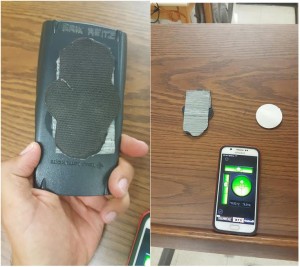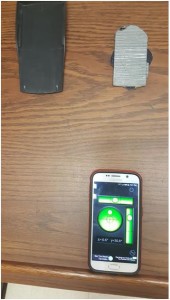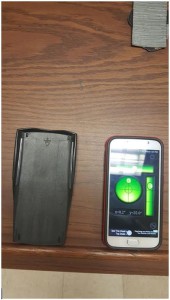Spring 2016 RoFi: Feet Material Verification Test
Christopher Andelin (Project Manager)
Mario Ramirez (Systems Engineer)
Qui Du (Manufacturing Engineer)
Andrew Laqui (Electronics and Controls Engineer)
Henry Ruff (Electronics and Controls Engineer)
Table of Contents
Feet Material Verification Test
Mario Ramirez (Systems Engineer)
Requirement
Nonslip material on the bottom of RoFi’s feet shall have a friction coefficient of 0.9 +/- 0.05.
Test Objective
To verify that the material on the bottom of RoFi’s feet has a friction coefficient of 0.9 +/- 0.05 with a laminated podium.
Tools
Figure 1 shows the tools I used to calculate the friction coefficient of RoFi’s shoes.
Preliminary Calculations
Figure 2 indicates the vectors involved in my experiment.
μ = friction coefficient
Equation threshold where static object begins to move: m*g*sin(theta) = μ*m*g*cos(theta)
Procedure
Step 1: Weigh desired mass and attach non-slip material.
Step 2: Place mass and material on an incline.
Step 3: Tilt surface until slipping occurs and record the angle.
Step 4: Calculate friction coefficient using equation.
Results
A second material was tested along side the mouse pad to show a difference in friction coefficients.
Reference
http://www.physicsclassroom.com/class/newtlaws/Lesson-2/Types-of-Forces







